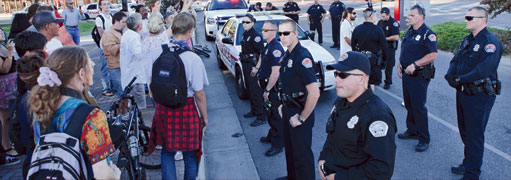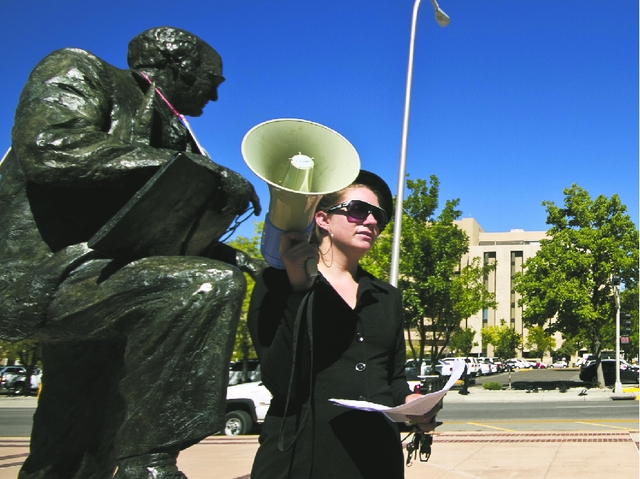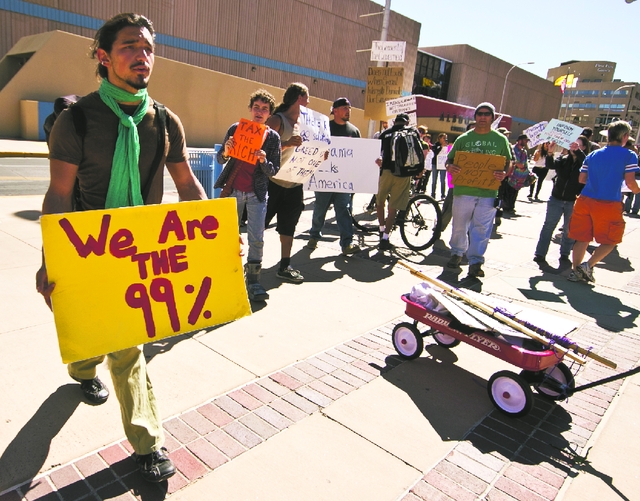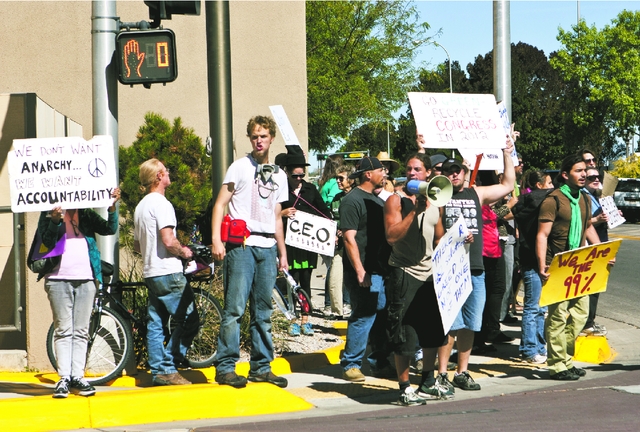The Class Movement: The Evolution Of Burque’s Revolution
Evolution Of A Revolution


Junfu Han

Protesters at the “4 Hours. 4 Banks.” demonstration on Wednesday, Oct. 12, at Civic Plaza in Downtown Albuquerque
Junfu Han

Junfu Han

Junfu Han

Protesters wait to cross street during “4 Hours. 4 Banks.” in Downtown Albuquerque.
Junfu Han

Eric Williams ericwphoto.com








